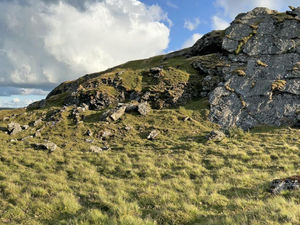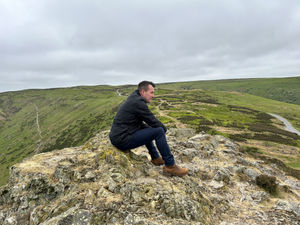Majestic red kites – and how you can watch them from your homes in the West Midlands
I watched the bird glide on thermals across a brooding gun-grey sky that threatened thunder, the distinctive forked tail twitched as it negotiated fledgling winds quickly growing in fury.
Watch more of our videos on ShotsTV.com
and on Freeview 262 or Freely 565
The long, bent wings beat lazily, the rakish body twisted and turned.
Then another, cloud high above the first. A near dot, yet the shape was unmistakeable. And another, soaring like some malevolent vulture in a Wild West movie.
Red kites, among the most spectacular of our birds of prey: a Lazarus species brought back from the very brink of extinction.
Yet this dramatic aerial display didn’t take place above remote moorland, it wasn’t played out in some dense, vast forest or close to a mountain range’s peaks.
I watched the kites circle from the comfort of my conservatory. And my village, which straddles the Shropshire-South Staffordshire border, is a mere nine miles from Wolverhampton’s diesel driven heartland.
In fact, two were recently seen above the city centre. That is the measure of the kite’s amazing return, one of British conservation’s great success story, partly made possible by millions spent on re-introduction programmes.
And nowhere is that success story more evident than in Shropshire, where kites have swept across the county from their last remaining 20th century stronghold – the oak woodlands of mid-Wales.
In the 1970s, when journalism restricted my birdwatching breaks, finding red kites required a trip to the Elan Valley and stop-off at the market town of Tregaron, Ceredigion. And there was no guarantee of a fruitful journey.
In the bus pass years of my retirement, I pondered morris dancing, but feared repeated thwacks to the head from pig bladders may further harm my already faltering memory.
I also feared repeated thwacks to the head may further harm my already faltering memory.
Instead, I have tightened my embrace with ornithological. And red kites, realising my driving skills and footwork are in terminal decline, have come to me. I no longer have to trudge through a sodden, sheep strewn landscape to meet them.
Last week was not an isolated encounter. In the past months and years, kites have frequently graced my picturesque parish.
Jeff Knott, RSPB operations director for Central England, underlined the extent of the phoenix from the ashes triumph: “In the 1980s, anyone who wanted to see a red kite had to make a dedicated pilgrimage to a handful of locations. Today, it is a daily sight for millions of people.
“In just a few decades, we have brought an endangered species to the UK, home to nearly 10 per cent of the world’s population. This could be the greatest species success story in British conservation history.”
They are here and here to stay. And if you, too, have been privy to the same performance that was played out above my back garden, please share pictures.
I need pictorial proof to stop pinching myself. I need to know this invasion is really happening.
And it’s happening at near breakneck speed, said West Midlands Bird Club chairman Roger Broadbent.
Kites didn’t raise young in Staffordshire until 2021. Now there are at least half-a-dozen nesting pairs.
“They are progressing eastwards to the point where they have nested close to Ingestre, seven miles from Stafford,” Roger said. Warwickshire and Worcestershire also have populations growing like topsy.





